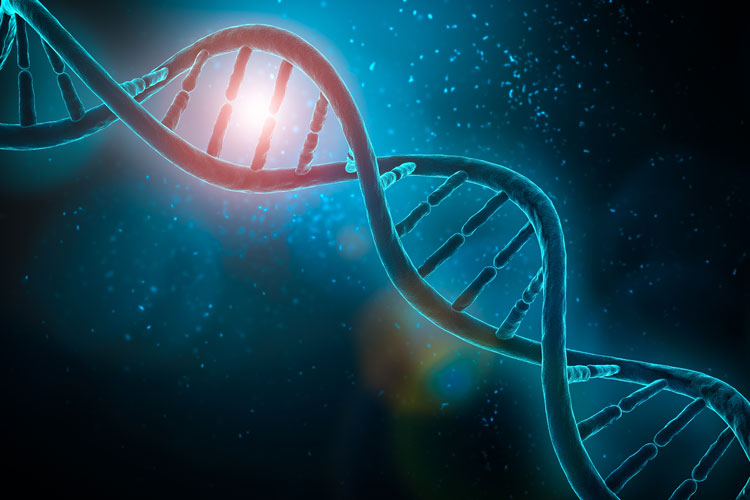
The benefits of haplotypes to understand and identify genetic variation is a fairly new aspect of cattle breeding resulting from the expanded use of genomics and genotyping over the past 15 years. It’s common knowledge that genomic selection has accelerated genetic progress and improved animal performance; however, the role of haplotypes may be less familiar.
Research and predictions around haplotypes are conducted by USDA’s Animal Genomics and Improvement Laboratory (AGIL) and the Council on Dairy Cattle Breeding (CDCB). CDCB manages the national genotypic and performance database and publishes the U.S. genetic evaluations for 50 traits and four selection indexes. CDCB also reports known haplotype calls for genetic factors in the Ayrshire, Brown Swiss, Jersey, and Holstein breeds. Official documentation from breed associations and CDCB contains codes that clarify an animal’s carrier status for identified genetic factors.
Changes to the December CDCB evaluations include new haplotype calls for early onset muscle weakness syndrome (HMW) in Holsteins, updated haplotype calls for cholesterol deficiency (HCD) in Holsteins, and updated imputation results for all breeds.
What is a haplotype?
A haplotype for a genomically-tested animal is a short section of DNA inherited together from its sire or dam. In genotyping, we read genetic markers — most often single-nucleotide polymorphisms (SNPs) — scattered across an animal’s genome.
Haplotype matching has allowed us to discover ancestors in cases where animals’ parentage was unknown or questionable. Haplotype analysis is also used to identify genetic factors that impact expression of specific phenotypic features. Sometimes this is a desired expression, like polled (hornless) or coat color. In other cases, those factors are detrimental or even lethal. In the past decade, several haplotype calls that affect fertility, embryo death, and stillbirth, for example, have been discovered and reported.
Typically, results from a gene test are used to identify the carrier status of high-profile animals. We cannot always obtain actual gene tests to identify carrier status on all animals in a population. Sometimes the causal variant is unknown or not on a commercial genotyping chip. In these cases, haplotype calls are made available to identify animals’ carrier status in a cost-effective, efficient way through the normal genomic evaluation process.
What changes are coming in December?
Starting with the evaluations this week, U.S. evaluations will contain a new haplotype call for early onset muscle weakness syndrome in Holsteins. Abbreviated HMW, CDCB will report noncarrier (0), carrier (1), homozygous (2), probable carrier (3), or probable homozygous (4) status for genotyped animals.
In a test run using November 2023 genotypes, 87.7% of the genotyped Holstein population was reported as noncarrier (0). Reports of “probable carrier” (3) and “probable homozygous” (4) are often due to the inability to confirm the presence of the mutated haplotype through available pedigree information.
HMW is a genetic condition that remains under investigation by Holstein Association USA (HAUSA) and has been a top research priority for HAUSA, CDCB, and USDA AGIL. In 2022, farmers in several states contacted researchers at Penn State about a suspected genetic condition characterized by a calf’s inability to stand up or remain standing if assisted. Initially referred to as calf recumbency, this condition has since been updated to early onset muscle weakness syndrome, or MW. According to current research, this disorder usually begins within the first two months of life. Calves exhibit muscle weakness, become unthrifty, and succumb to secondary health problems, such as pneumonia, or are euthanized.
Secondly, there will be an update to the haplotype call for cholesterol deficiency (HCD) in Holsteins. Through collaboration with HAUSA, CDCB and AGIL were granted access to more than 1.3 million female lab tests for cholesterol deficiency. These genetic tests are now included in the HCD haplotype call, improving the accuracy of results. In a test run using November 2023 genotypes, 96.6% of the Holstein population was reported as noncarrier (0) for HCD.
Also, the imputed genotypes for all animals will be updated in the December evaluations. Imputation is the process in which haplotypes are obtained. This is a periodic process that ensures the full population benefits from the latest information on SNPs. This is expected to result in higher variability of haplotype calls for specific subsets of the population. Animals that have complete pedigrees and were genotyped with a high-density chip are expected to remain stable.
Read more about these changes, as published by CDCB and USDA AGIL.
What are the next steps?
As with any genetic condition, when producers know animals’ carrier status, they can manage the condition within their herd by avoiding homozygous, or carrier-to-carrier, matings. An HMW call of 1, 2, 3, or 4 in an animal should not automatically equate to removal from the herd. Instead, the call indicates a new factor to be managed through mating and selection decisions.
As with any genetic condition, testing for its presence is the best first step in managing the condition. As breeders perform HMW gene tests on animals, they are encouraged to submit test results to HAUSA. A collaboration is in place between HAUSA and CDCB to confidentially exchange these gene test results as a tool to improve the HMW haplotype call and reduce the number of animals with a 3 or 4 (“probable”) HMW result in future evaluations.
This topic was further described by a panel during the CDCB meeting at World Dairy Expo in October. Read more here.








